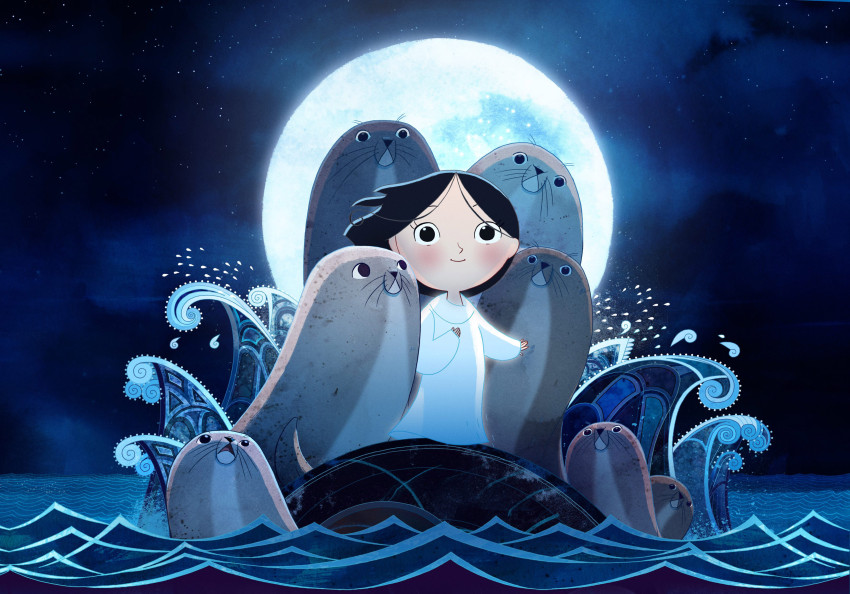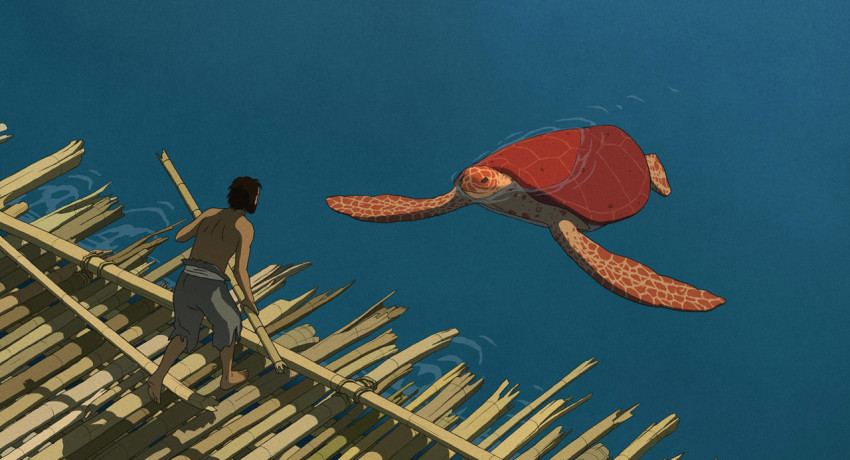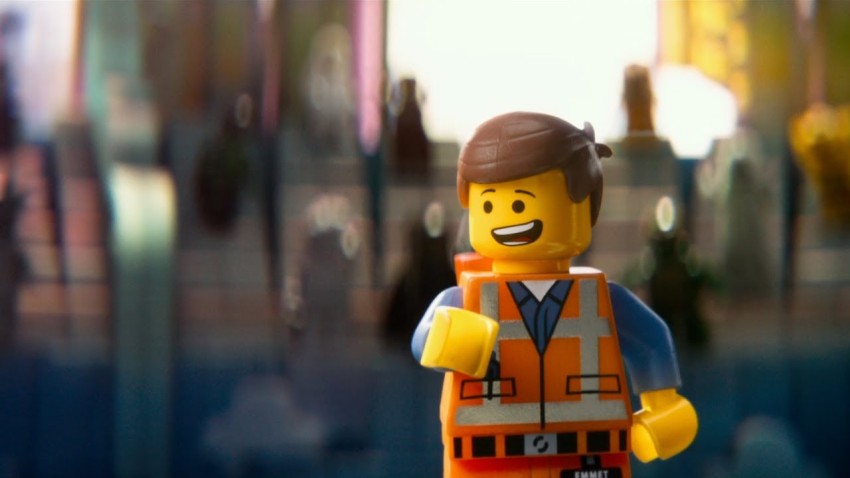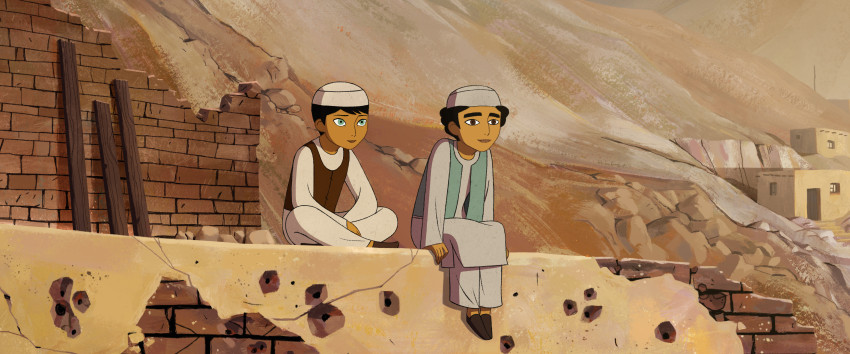Picking the Winners
April 18, 2017 · 0 comments
By Andrew Osmond.
 Earlier this month, there was a snippet of news in the film press about the Oscars. At first glance, it seems a technicality, but it could be serious, very serious, for any fan of animation beyond Hollywood. It’s about the way the nominees for Best Animated Feature Film are chosen – the three or five names read on the stage on Oscar night, while bits of the films are shown to a global TV audience.
Earlier this month, there was a snippet of news in the film press about the Oscars. At first glance, it seems a technicality, but it could be serious, very serious, for any fan of animation beyond Hollywood. It’s about the way the nominees for Best Animated Feature Film are chosen – the three or five names read on the stage on Oscar night, while bits of the films are shown to a global TV audience.
Until this year’s Oscars, says the Hollywood Reporter, “It’s believed that fewer than 200 of the Academy’s 7,000 members, mostly from the animation and shorts branches, have been involved in selecting the nominees in the animation feature category.” Now that will change. All of the Academy’s 7,000 members will be invited to nominate the films (although some may choose to abstain).
Will changing the voting pool change the kind of films that end up on the nominee list, and enjoy the publicity that comes from it? Think of the latest Oscars. Pixar’s massively popular Finding Dory, one of the highest-grossing cartoon films ever made, wasn’t nominated for Best Animated Feature. Meanwhile two far, far smaller films – The Red Turtle and My Life as a Courgette (aka My Life as a Zucchini) – were. Or remember when Lego Movie was “snubbed” in 2014, while Princess Kaguya and Song of the Sea made the shortlist.
None of these small films won; the winners were still Hollywood cartoons. While the nominees for the Animated Feature category were picked by a minority of the Academy, every Academy member could vote on which nominee was best. They just couldn’t vote for Finding Dory or The Lego Movie. But the speculation is that by changing the voting rules for nominations, we’re going to see far fewer “little” films reaching even the shortlists, so goodbye to those seconds of global publicity on Oscar night.
If you’re reading this blog, you’re probably not neutral on this issue. You’re an anime fan, likely to be in a country where anime is less recognised than “mainstream” cartoons. (That may even be true in Japan itself. According to Jonathan Clements, author of Anime: A History, “The average Japanese viewer doesn’t sit there with a stack of fan-bait otaku stuff. Animation in Japan often means Disney or Pixar.”)
Most anime fans know the frustration that comes from realising that so few people around them have any interest in what they love, be that Totoro or Panty & Stocking. And fans are maddened by seeing the works they treasure being commercially steamrollered by every toon that opens with a Disney castle or a Pixar lamp. If you’re an anime fan, or a fan of non-Hollywood animation, it’s hard not to see other people as being woefully ignorant about animation. Anything that pushes back that ignorance – like, say, an Oscar nomination – can only be a good thing.
 It’s a perspective shared by animators themselves, who often seem concerned that people see not the animation they make, but the animation that inspired them. That’s why Ghibli helped Michael Dudok de Wit make Red Turtle (pictured), to bring his artistry – previously expressed in shorts – to a wider audience. That’s why Ghibli runs a video label distributing great cartoons from all around the world. It’s also why John Lasseter spent decades promoting Hayao Miyazaki – and surely that’s a huge part of the reason why Spirited Away is the only anime to win a Best Animated Feature Oscar.
It’s a perspective shared by animators themselves, who often seem concerned that people see not the animation they make, but the animation that inspired them. That’s why Ghibli helped Michael Dudok de Wit make Red Turtle (pictured), to bring his artistry – previously expressed in shorts – to a wider audience. That’s why Ghibli runs a video label distributing great cartoons from all around the world. It’s also why John Lasseter spent decades promoting Hayao Miyazaki – and surely that’s a huge part of the reason why Spirited Away is the only anime to win a Best Animated Feature Oscar.
It’s easy – very easy – to caricature anyone who doesn’t share this perspective as… well, as a certain anonymous chap who was quoted in Cartoon Brew a couple of years ago. This vocal person was a member of the Academy, and was outraged that Ghibli’s Kaguya was nominated in 2014 while The Lego Movie was not. Let’s quote him at length…
“When (The Lego Movie) is that successful and culturally hits all the right chords and does that kind of box-office — for that movie not to be in over these two obscure freakin’ Chinese f***in’ things that nobody ever freakin’ saw? Most people didn’t even know what they were! How does that happen? That, to me, is the most ridiculous thing I’ve ever seen.”
(If you’re wondering why this voter refers to two Chinese “freakin’ things”, he’s apparently talking about not only the Japanese Kaguya but Song of the Sea as well. The latter was made in, er, Ireland.)
 It’s easy to laugh. One could imagine the speaker’s comments being delivered by Alec Baldwin in his tangerine wig on Saturday Night Live. But mock as we may, the foulmouthed speaker might have a point. What are the Oscars for? Are they meant to be a cartoon charity, to promote animation at all levels of popularity, from all around the world? Or are they – as the speaker suggests – to reward success in American culture?
It’s easy to laugh. One could imagine the speaker’s comments being delivered by Alec Baldwin in his tangerine wig on Saturday Night Live. But mock as we may, the foulmouthed speaker might have a point. What are the Oscars for? Are they meant to be a cartoon charity, to promote animation at all levels of popularity, from all around the world? Or are they – as the speaker suggests – to reward success in American culture?
In the words of anime expert (and tireless anime proselytiser) Helen McCarthy: “The Academy is an American body with an American worldview. Naturally, American product concerns the Academy above all else. It celebrates excellence in foreign film, but promoting American movies is its reason for existence.”
It’s less plausible to say the Oscars should only reward blockbusters. If it did, the recent Best Picture awards for Moonlight, Spotlight, Birdman and 12 Years a Slave were all wrong for starters. But our anonymous friend addresses this with his comment about “culturally hitting the right chords.” You could take this as a demand that Oscar winners – and even nominees – should impinge on the American mainstream, even if they’re not part of it.
The problem with animated feature nominees is that many of them seem too titchy to impinge on anything in America. Kaguya, Zucchini, Red Turtle and Song of the Sea each made less than a million dollars in American cinemas. Meanwhile the snubbed Lego Movie made a quarter-billion dollars; Finding Dory made nearly half a billion, and twice that globally.
Of course, the small films will fare better on home formats, while their Rotten Tomatoes ratings match or beat the blockbusters. But Lego Movie and Finding Dory had splendid reviews too, and they made absurdly more money than the imports. Isn’t it just elitist indulgence to nominate the latter films over the former? And as for home formats, don’t Oscars celebrate cinema?
Whether these considerations actually motivated the change in Oscar rules is unclear. The Hollywood Reporter notes the Academy has also moved to widen the voter category for Best Foreign Film. That hasn’t stopped speculation that there’s more’s going on; that people like our nameless friend want the Academy to embrace shiny, lucrative new CG and stop fawning over outmoded drawings and puppets. (Even Kubo and the Two Strings, with its star voices and a 3,000+ screen release, made under $50 million Stateside.)
So is it all over? In recent years, the Oscars have made steps to address diversity; but should we expect all-Hollywood, all-CG noms in animation? We just don’t know yet. The Academy voters may be swayed by the big brand names, but marketing may still make the difference. Your Name wasn’t nominated for the last Oscars, but then Your Name had almost no promotion for the Oscar voters. In contrast, a distributor like GKIDS – which fielded nine animated Oscar nominees in eight years – is known for its energetic marketing of underdogs.
 GKIDS has already announced two new “indy” animated films in America this year. One is The Breadwinner (pictured) animated in Ireland, about an Afghan girl under the Taliban. Another – which couldn’t be more different – is the heftily-named My Entire High School Sinking into the Sea. It’s an apocalypse comedy which promises to treat teens like South Park treated kids, by the artist Dash Shaw.
GKIDS has already announced two new “indy” animated films in America this year. One is The Breadwinner (pictured) animated in Ireland, about an Afghan girl under the Taliban. Another – which couldn’t be more different – is the heftily-named My Entire High School Sinking into the Sea. It’s an apocalypse comedy which promises to treat teens like South Park treated kids, by the artist Dash Shaw.
Can these films prevail against The Lego Batman Movie or the third Despicable Me? Eric Beckman, the CEO of GKIDS, remains upbeat. Speaking to Indiewire after the rule change was announced, he said, “Live-action big popcorn movies and commercial endeavours get less Oscar love than more thoughtful films. If you take that and apply it to animation, that explains why GKIDS has done well. Our films will stand on their own. We’ll figure out a way to get it done. The goal is getting a Best Picture win for animated film.”
Let’s hope.
Academy Awards, animation, awards, Disney, Oscars, Pixar, Song of the Sea, The Lego Movie, The Red Turtle
Leave a Reply